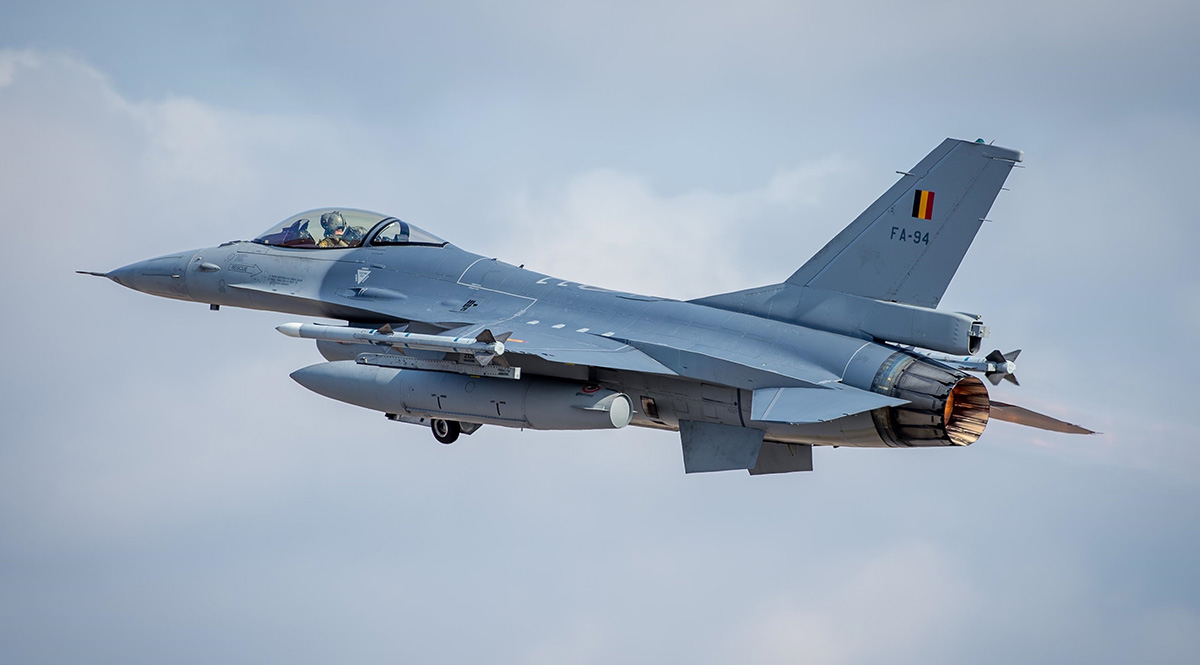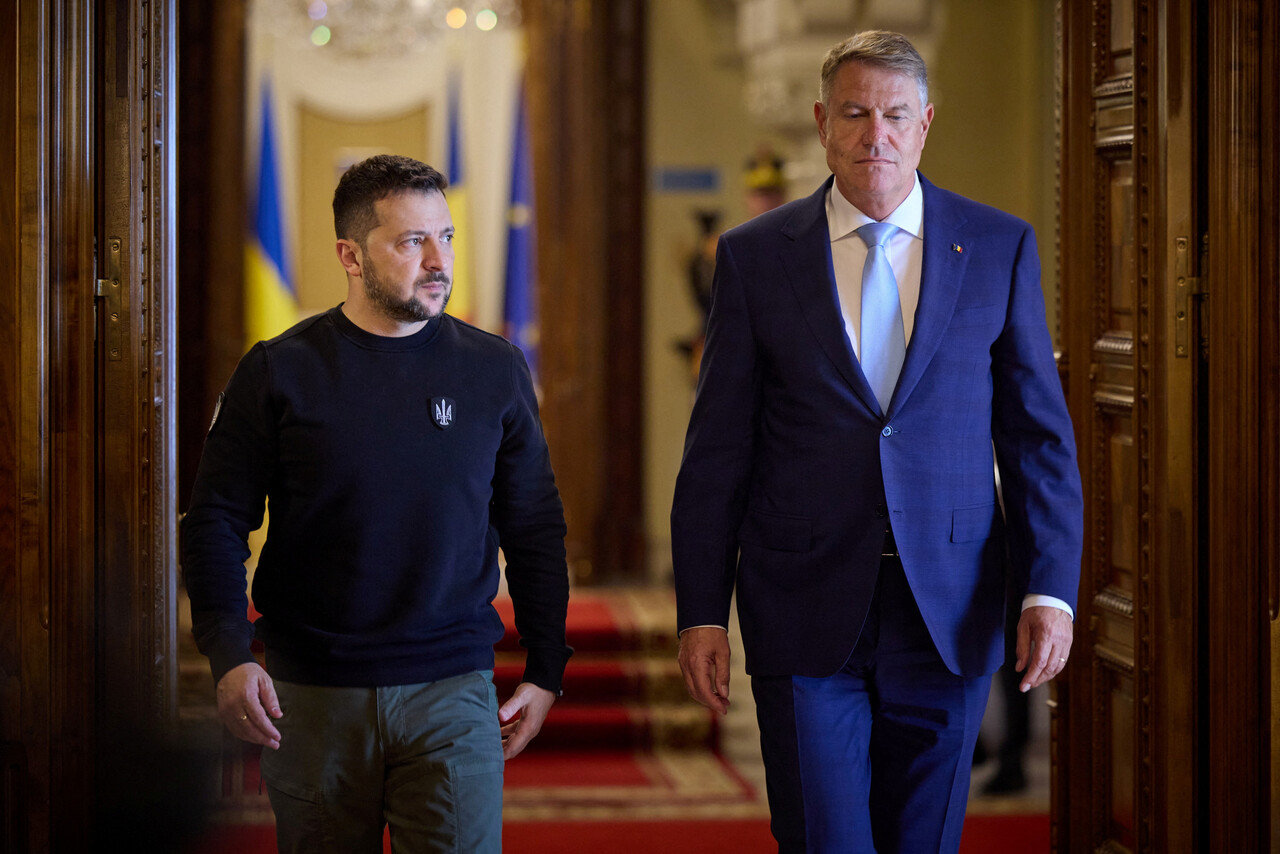Romania Boosts Defences in Wake of Russian Invasion of Ukraine
In response to the threat posed by Russian aggression against Ukraine, Romania has increased investment in its armed forces and is stepping up modernisation, while the threat has prompted NATO allies to deploy additional troops on its territory. It is also an important hub for assistance to Ukraine. Due to similar security perceptions, Romania remains Poland’s main partner on the southern Eastern Flank of the Alliance.
 IPA / BACKGRID / Backgrid UK / Forum
IPA / BACKGRID / Backgrid UK / Forum
Impact of the War on Romania’s Security
The invasion of Ukraine has heightened Romanians’ fears of Russian imperialism. The Russian navy operates in Romania’s economic zone. Drifting mines threaten shipping and one damaged a Romanian minesweeper in September 2022. Attacks on the Ukrainian Danube ports of Reni and Izmail have prompted Romania to build shelters and strengthen air defences in the border areas. While falling drone debris downed over Ukraine so far has not resulted in losses, the Romanian army is signalling that the law prevents it from attacking such objects in peacetime.
Since 2017, Romania has been meeting NATO’s guidance of spending 2% of GDP for defence. After Russia’s invasion of Ukraine, it raised that level from 2023 to 2.5% of GDP to €8 billion, of which €3 billion was for investment, although later that year it adjusted the defence budget back to 2%. This revision was due to its inability to use the full allocation—expenditures reached just 1.75% of GDP in 2022 and 1.58% in 2023. The reason for this is the structural inefficiencies in the Ministry of Defence’s procurement division and animosity with the Ministry of Economy, which manages the arms industry, over extended times of deliveries and rising prices on the arms market as a result of the war. At the beginning of this year, this led Romania to suspend a €4.2 billion tender for short- and very short-range air defence systems. It is therefore uncertain how much it will spend of the 2.3% of GDP allocated to the 2024 defence budget.
Strengthening the Land and Air Forces
Romania has accelerated key purchases from the “Army 2040” modernisation programme, which was adopted in 2020. It intends to spend €10 billion by 2026 alone. However, this amount will not comprehensively fill major gaps in capabilities. Among other things, the Ministry of Defence has ordered an additional 150 units of the original order in 2018 of 227 Piranha V wheeled infantry fighting vehicles, manufactured under Swiss licence. It has been, however, slow to implement the original order. If domestic industry is to build them by 2040, that is an average of 18 vehicles per year, which will not be quite enough for two brigades, although the ground forces are composed of eight manoeuvre brigades and two combat support brigades. In contrast, Romania has bought some U.S. Army reserve units for just over $1 billion, including 54 Abrams tanks, which will be delivered after 2026. Meanwhile, it needs around 250-300 tanks to replace the archaic T-55 currently in use and the domestic TR-85 version, with only around 50 of them in the Bizonul variant meeting elementary NATO standards. Romania’s plans still do not include the purchase of helicopters, although the Ministry of Defence announced it in 2017.
Romania has entered into a partnership with South Korea, which is making its arms debut on European markets. It has bought 54 Chiron man-portable anti-aircraft systems and is negotiating the purchase 54 K9 howitzers for $2 billion. In addition, Romania has signed a memorandum with Korea for its help to restore gunpowder production in the country. It is also signalling interest in South Korean tanks and infantry fighting vehicles—it needs around 300—as Korea can supply them quickly. Meanwhile, Romanian industry is incapable of producing advanced heavy weapons on its own, while NATO partners with such technologies, after years of neglect, are unable to rebuild production capacity to fulfil orders in a short time.
Romania is modernising its aviation. In the spring of 2023, it decommissioned its post-Soviet MiG-21 fighter jets and began purchasing 32 F-35 multirole aircraft for $6.5 billion (with an option for a further 16), which it will receive after 2032. Until then, Romania is using second-hand F16 AM/BMs as a bridging solution—in addition to the 17 it bought from Portugal, in 2023 it purchased 32 of the planes from Norway, to be delivered by 2025. It is buying 500 missiles for them from the U.S. However, until these aircraft reach full combat readiness, Romania will continue to rely on allied aviation support as part of NATO Air Policing.
Navy Problems
The strengthening of the Romanian Navy is crucial for NATO operations in the Black Sea. This is because the Montreux Convention of 1936 limits the stay of non-coastal states’ ships there to 21 days. Since 1989, Romania has only acquired two, old Type-22 frigates, bought from the UK 20 years ago without missile systems, and a domestically-built corvette in the 1990s. In 2023, Romania bought two minehunters decommissioned from the Royal Navy. Romania is strengthening its neglected navy on an ad hoc basis. It has asked for U.S. help to upgrade the Type-22 frigates and has ordered two H215M surface combatant helicopters for them from Airbus, to be built at the factory in Braşov. It announced the rearmament with NSM missiles of three missile corvettes and the intention to order two patrol vessels in a fast-track procedure from the Galaţi shipyard owned by the Dutch firm Damen. Romania also joined the PESCO programme for the construction of patrol corvettes, which, if successful, means the first vessels would be built after 2030. These measures are intended to fill the gap caused by the cancellation in 2023 of a €1.2 billion programme to build four corvettes and the modernisation of the Type-22 frigates in a Romanian shipyard after the Ministry of Defence failed to agree with the French Naval Group selected in the tender and did not enter into negotiations with Damen, whose offer was second..
Romania is seeking to rebuild its submarine force. It is negotiating with the Naval Group—despite past bad experiences—to build two Scorpène-type submarines in France for around €2 billion. Their commissioning would be a challenge for the Romanian Navy, as it has not had such vessels in the line since 1996, and it would take up to 10 years to rebuild the technical facilities and to train crews.
Allied Support
Romania considers the close bilateral alliance with the U.S., membership in the EU and NATO, and cooperation with Germany and France as the foundations of its security. Relations with regional partners are secondary, as it does not see them as equivalent to Western ones. Nevertheless, Romania is—next to Poland—the most active member of the Bucharest Nine, a forum it uses to strengthen its voice in the Alliance and to neutralise pro-Russian Hungary and, until recently, also Bulgaria. Romania has taken advantage of a period of deterioration in Poland’s relations with France and Germany, and previously the U.S., to present itself to them as a key partner in the east of NATO.
The war in Ukraine is the basis of Romania’s demand for allied support with more forces. Its authorities argue that NATO had underestimated the importance of the Black Sea region. The U.S. operates air bases at Câmpia Turzii and Mihail Kogălniceanu and an anti-missile base at Devesel, but has not deployed permanent forces in Romania. Although it sought a multinational battle group at the 2016 Alliance summit in Warsaw, it only obtained the establishment of a training brigade in Craiova. Only in response to the Russian invasion did the U.S. triple the number of its troops (to around 3,000). However, Romania is still seeking permanent basing. In parallel, it has accepted the help of France, which has formed a NATO battlegroup in Cincu also made up of soldiers from Belgium, the Netherlands, Luxembourg, Poland (present in Romania since 2017 as part of a training brigade in Craiova), Portugal, and the U.S., and deployed the MAMBA air defence system on the coast. Romania also asked Germany for a contingent, but was refused.
Romania provides little military support to Ukraine but is the next most important hub, after Poland, for foreign aid to it. In the Romanian city of Satu Mare, German arms manufacturer Rheinmetall opened a workshop in spring 2023 to repair Western equipment donated to Ukraine. Romania, as part of the coalition supplying F-16s to it, set up a training centre for Ukrainian pilots in Feteşti in autumn 2023 together with the Netherlands, Denmark, and the U.S. company Lockheed Martin, manufacturer of the planes. In turn, in January 2024, together with Bulgaria and Turkey, it established a coalition to combat the mine threat in the Black Sea.
Conclusions
Faced with the war in Ukraine, Romania has persuaded its NATO allies, including the U.S. and France, to make a prominent and sustained commitment to its Black Sea forces. Romania also is trying to implement high funding for its own army, and despite procurement problems, has accelerated its modernisation. It is making similar arms purchases to Poland from South Korea. This may allow for coordination of purchases and in the operation of equipment but, in its absence, may result in a rivalry that strengthens the Korean negotiating position.
Cooperation with Poland, despite similar security perceptions, is secondary for Romania as it does not consider it equivalent to the major Western allies. Nevertheless, both countries should maintain the Bucharest Nine channel to promote within NATO the need to further strengthen the Eastern Flank and support Ukraine. The higher effectiveness of cooperation with Romania may be fostered by the approach of the new Polish government, which in European policy has moved closer to France and Germany, which Romania considers to be key allies.





